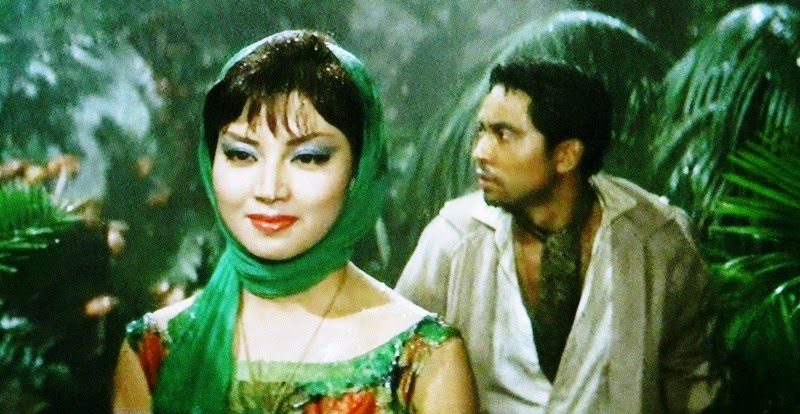
Matango (1963), also known as Attack Of The Mushroom People in the U.S., is another foray into horror by the Japanese master Ishirō Honda. Like so many of Toho’s productions Matango boasts the cutting edge in special effects which, in Honda’s hands, are pivotal to creating the dreamlike atmosphere of the film. There’s less political allegory in Matango than in Honda’s The H-Man (1958) but that is compensated for with some criticism of Japan’s classism.
Matango is a survival story that metamorphoses into a tale of terror in its third act. A group of well to do men and women set sail on a yacht to cruise the open sea. After a storm hits, the passengers and two man crew drift to a mysterious island covered in fog. Once there they make two terrifying discoveries. First of all, there isn’t enough food to sustain human life. Secondly, the mushrooms that grow there are toxic and have transformed another shipwrecked crew into monstrous mushroom people. It’s either starve of join the ranks of the fungal fury.
By withholding the bulk of the action with the mushroom people for the last act Honda is able to concentrate on the human drama. So with the first two acts tensions build as characters begin to break under the strain of their situation. Then, once those tensions have boiled over, Honda goes all in on the science fiction elements so that they become a horror made manifest while at the same time functioning as a kind of catharsis for the audience.
There is a hallucinatory quality to the film that stems from the amount of control Honda could exercise over his visuals while shooting on Toho sound stages. Honda consistently pushes the cast as well into more and more operatic performances as the film plays on, reiterating the nightmare elements of the film. Matango never slips into the campiness of Battle In Outer Space (1959) despite the silly title of the American release.
